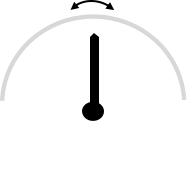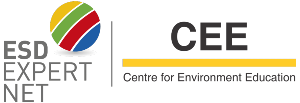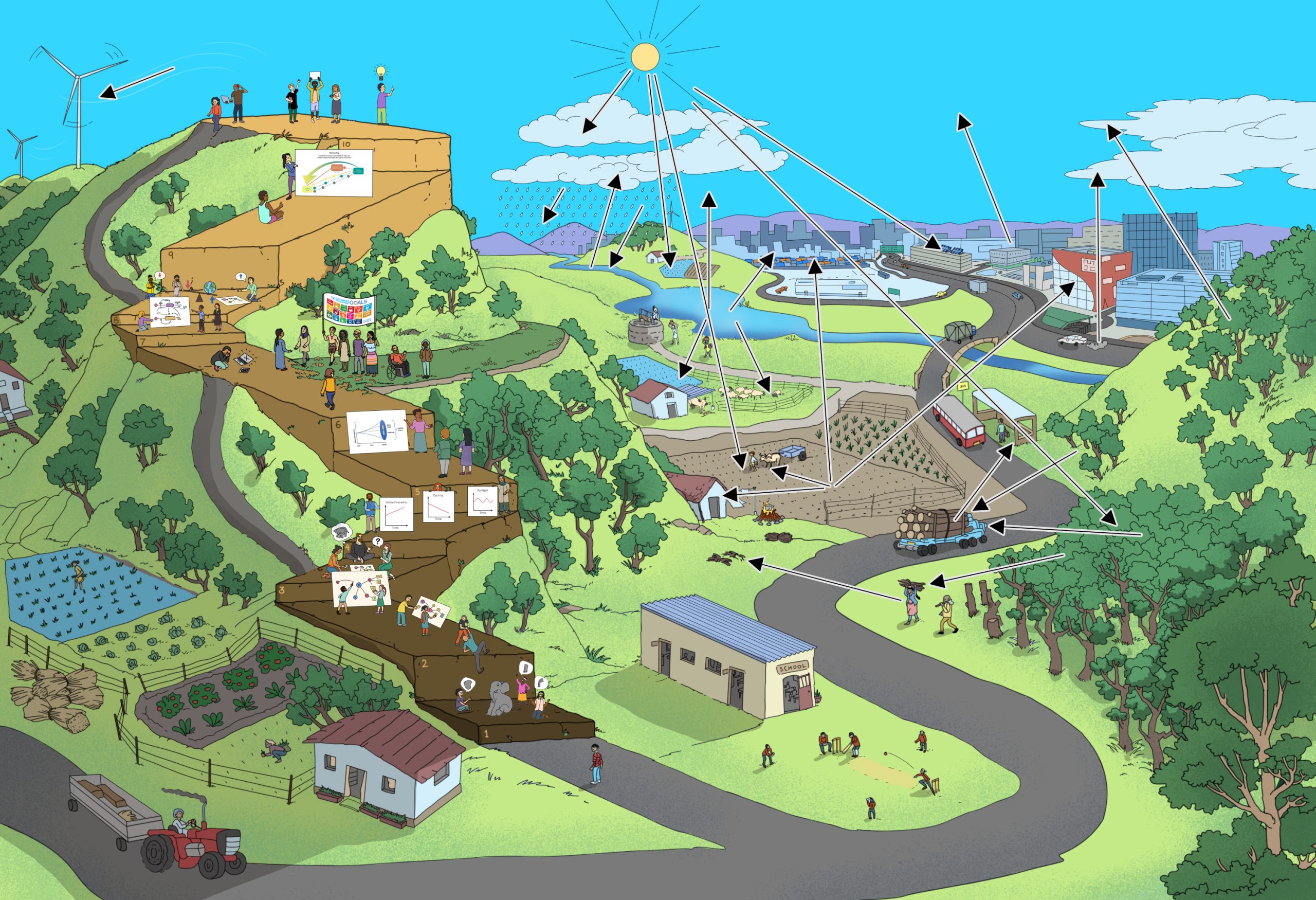Systems thinking is the ability to describe and/ or visualise a part of a complex reality, express that part of reality as a model, understand the model as a system, use the model to explain the behaviour of the system, anticipate the behaviour of the system, and evaluate its impacts on sustainable development, identify potential points of, and types of interventions, generate options to act, assess their impacts in the frame of sustainable development, and decide whether further actions are necessary or not.
- What is the aim?
To enable learners to:
- Understand that humans continuously intervene in many sub-systems of the global system, and therefore the global system itself,
- Understand that these interventions have been done, and are being done everywhere, knowingly, unknowingly, and often with partial knowledge,
- Understand that systems learning enables humans to decide and act to change systems, with purpose, and
- Use the knowledge about the points of intervention to change the functioning of systems.
Activity: Analyse leverage points
- Use the same working groups as in Step 7
- Ask each group to develop and present a podcast, of not more than 3 minutes duration. They should choose a leverage point in their Potato chips system (model /concept map) and explain the expected results if different types of interventions are implemented.
- Ask learners to brainstorm and list different possibilities to act using the leverage point they identified. What are the different strategies to act? Learners may use the worksheet “Sustainable or unsustainable” from Step 6, as well as “Using the Leverage”.
Worksheet
Using the leverage
Further leading questions
- Can human beings change structures, goals/ purposes and functions? What about natural laws?
- Is it possible to change the behaviour of a system in an intended direction, for sustainable development?
- If yes, how may this be done?
Example
Categories of leverage points of the Potato chips system
Identify different categories of leverages in your system. These might be used in different ways, causing different consequences.
Here are some examples of different leverages. The learners could work with different ones; it depends on their discussions and conclusions from the previous steps.

| Action/ Consequences | Leverage point | Action/ Consequences |
| No overuse of agricultural land
● limited yields ● stable or declining production ● natural soils ● recovering soil biodiversity ● good quality of groundwater ● …
|
Land resources used for potato production | Overuse of agricultural land
● short term increase of yields ● on the long run (permanent) degradation of soils and therefore need for higher investments in agro-chemicals ● water shortage ● contamination of groundwater due to agro chemical overloads ● competition between crops production on the usable agricultural land ● … |
| Weakening wishes for more flavours
● declining demand on flavours ● maintain the current production ● seek a fair income for workers ● Support local production ● …
|
Desire for more flavours of chips | Strengthening wishes for more flavours
● increasing potato production ● economic growth ● increase of big factories ● growing social disparities to be expected due to kept low labour wages and increasing win of entrepreneurs
|
| Healthy and sustainable potato chips
● higher demand for healthy snacks ● strengthening health programmes on community level ● promotion of good performances
|
Marketing Communication/ Social Media | Increase in consumption of the ordinary potato chips (business as usual).
● Increase of snacking of potato chips ● Relaxing is linked to potato chips consumption ● Well-being is related to consumption
|
| Change in the nutrition in school
● Healthy snacks ● Learning about how to enjoy snacks within a good diet. |
Policy
Nutrition in school policy
|
Change in the nutrition in school
● Snacks that exceed the recommended calories per day ● Malnutrition |
| Clear production and nutritional information
● Know if the product is sustainable or not, if it comes from a Fairtrade production ● Consumers know the ingredients and how appropriate they are for their daily diet. ● Consumers can make an informed decision of what they consume |
Labelling |
Unclear production and nutritional information
● Bad calories hidden ● Misleading information ● Artificial ingredient included |

